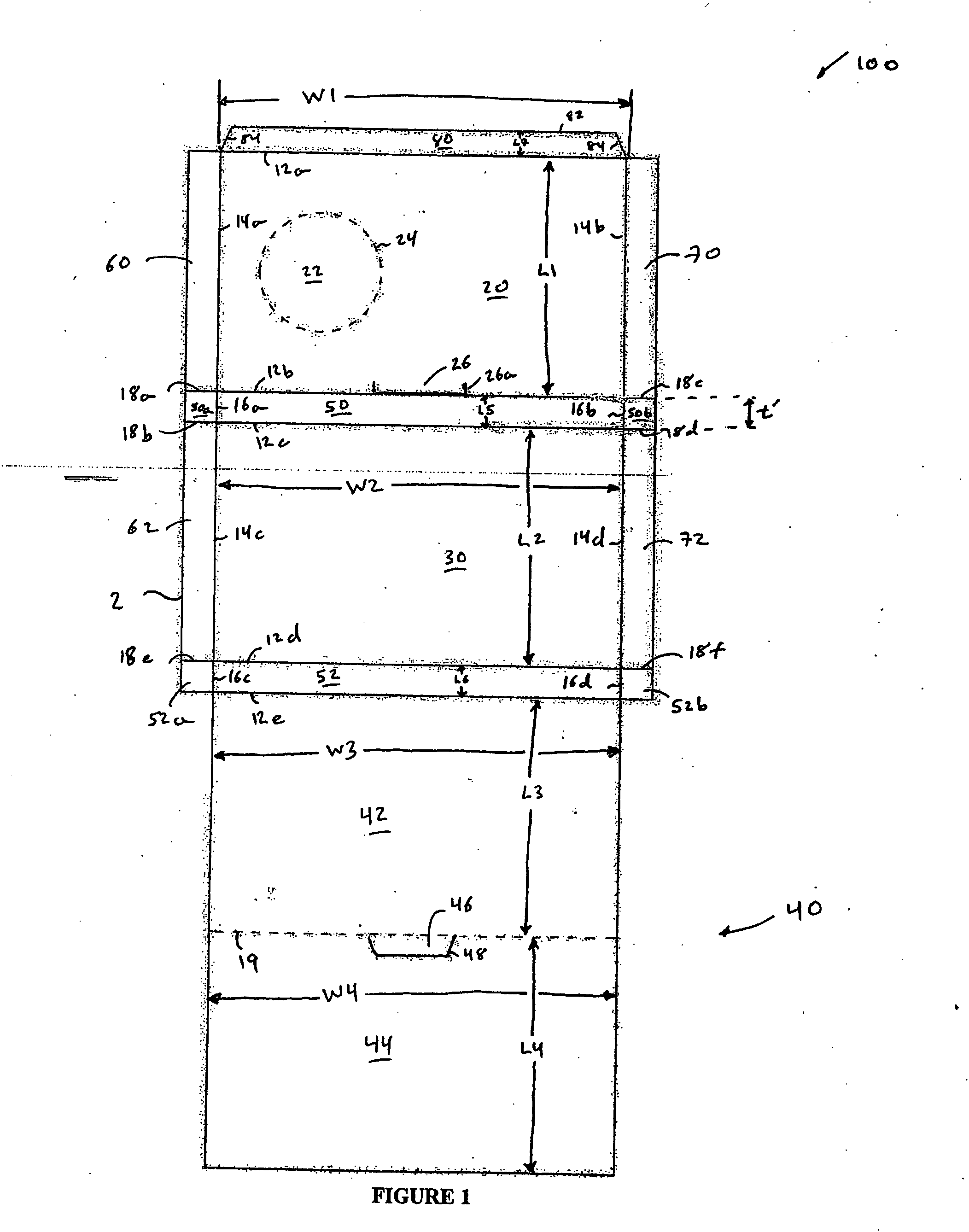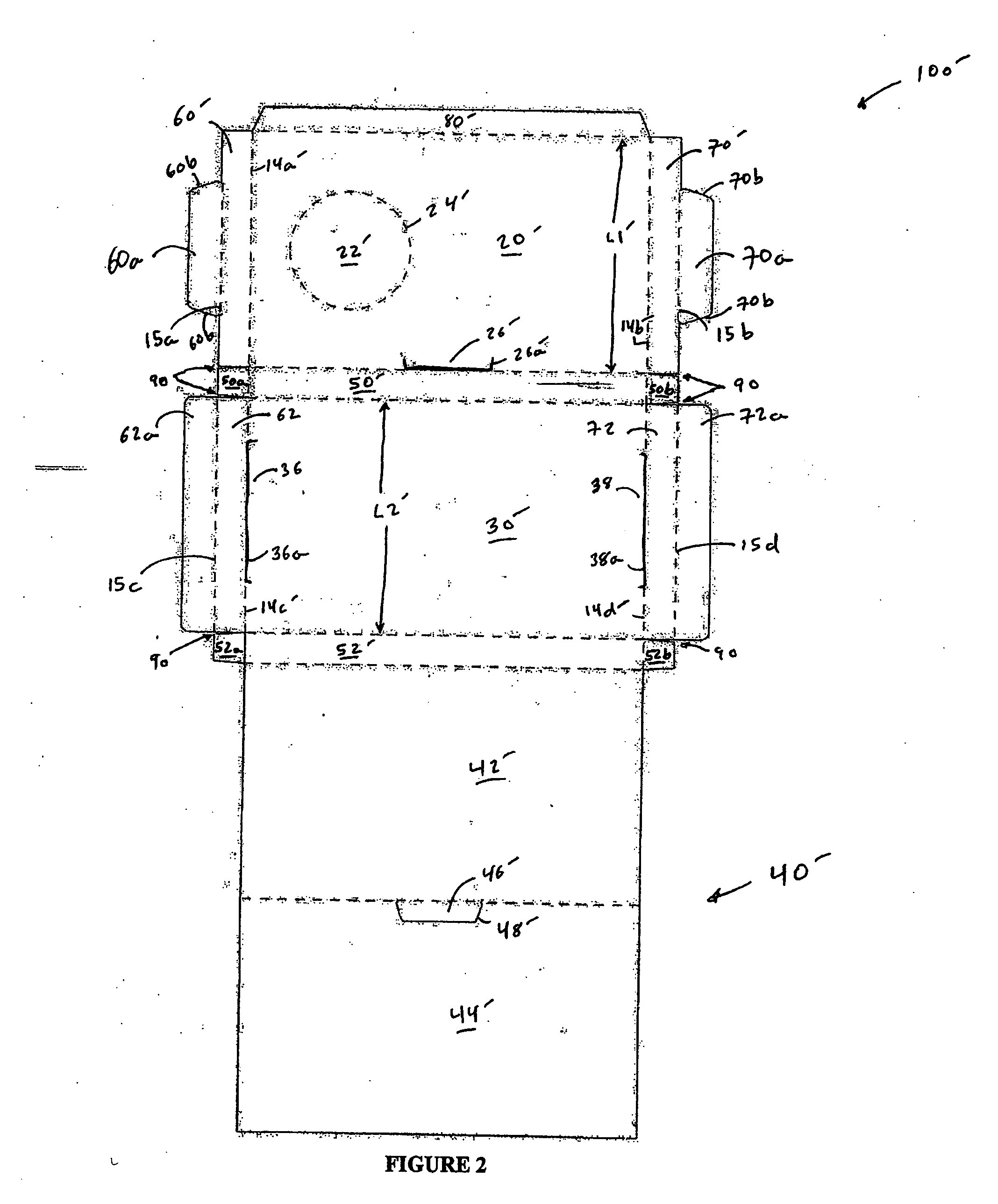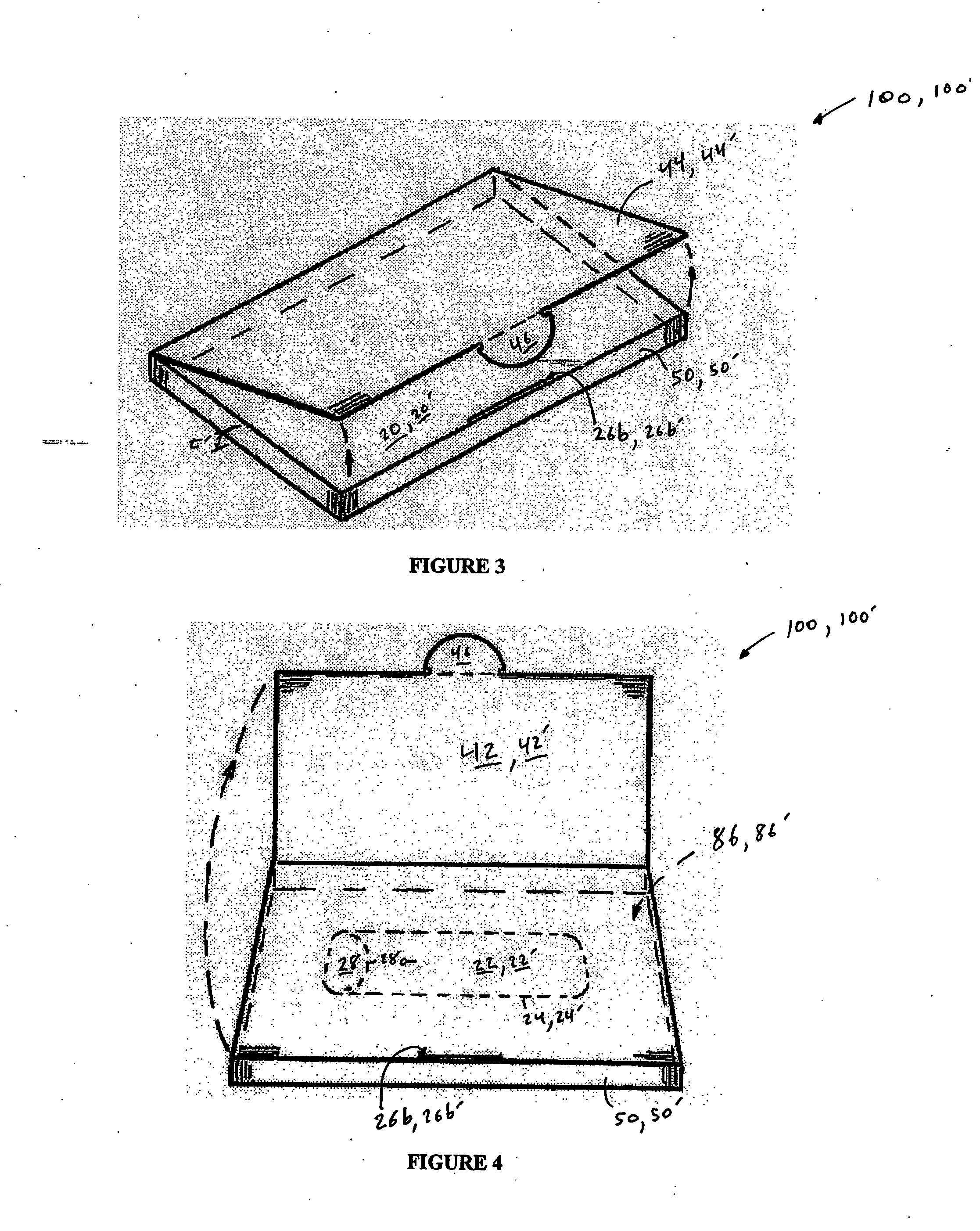Mailable greeting article
a greeting article and mail-in technology, applied in packaging, other printing materials, printing, etc., can solve the problems of difficult for commercially available manufacturing machines to insert tissues, difficult for tissues and other similar delicate materials to be easily disturbed, and difficult to insert tissues into boxes, etc., to prevent damage to boxes and their contents during distribution, and increase strength
- Summary
- Abstract
- Description
- Claims
- Application Information
AI Technical Summary
Benefits of technology
Problems solved by technology
Method used
Image
Examples
Embodiment Construction
[0033] In the following detailed description, terms of orientation such as “top,”“bottom,”“left,”“right,”“front,”“rear,” and “end” are used here to simplify the description of the context of the illustrated embodiments. Likewise, terms of sequence, such as “first” and “second,” are used to simplify the description of the illustrated embodiments. Because other orientations and sequences are possible, however, the present invention should not be limited to the illustrated orientation. Those skilled in the art will appreciate that other orientations of the various components described above are possible.
[0034]FIGS. 1-6 illustrate a tissue box 100. The various tissue boxes and greeting cards disclosed herein are described in the context of containers for storing facial tissues because they have particular utility in this context However, the boxes and greeting cards disclosed herein can also be used for containing any other type of material, including but without limitation, delicate m...
PUM
 Login to View More
Login to View More Abstract
Description
Claims
Application Information
 Login to View More
Login to View More - R&D
- Intellectual Property
- Life Sciences
- Materials
- Tech Scout
- Unparalleled Data Quality
- Higher Quality Content
- 60% Fewer Hallucinations
Browse by: Latest US Patents, China's latest patents, Technical Efficacy Thesaurus, Application Domain, Technology Topic, Popular Technical Reports.
© 2025 PatSnap. All rights reserved.Legal|Privacy policy|Modern Slavery Act Transparency Statement|Sitemap|About US| Contact US: help@patsnap.com



